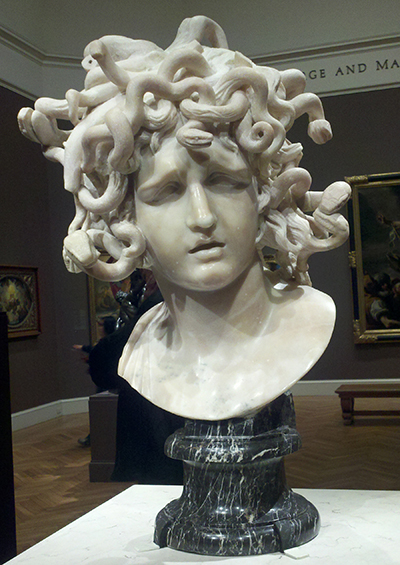The Medusa by Gian Lorenzo Bernini is one of the greatest treasures that the Musei Capitolini in Rome provided the San Francisco with. It is also among the history's sculptors and the leading figure in the 17th-century Italian architecture and art.
This project loan was part of the famous dream of Rome, initiated by the mayor of Rome to express the timeless masterpieces in the US from 2011 to 2013. The artwork represents inaugural product loaned as a section of the joint venture that was signed between the Fine Arts Museums of San Francisco and the Musei Capitolini designed and created to share exhibitions, collections, conversation knowledge, curatorial and collaborate on educational projects.
The recent agreements and efforts have restored Medusa to its great and full glory. The agreement revealed the hidden patina and polish techniques used in the development of the Medusa. Believed to date from 1638 to 1648, this extraordinary artwork takes its techniques and subjects from a classical mythology. To achieve ornate effects in artistic works, Gian utilized a method of casting commonly known as the lost-wax technique which is an ancient and a painstaking architectural process.
In this technique, the first process is to develop an original wax model of a sculpture. In the case of a baldachin, he used real-life objects like leaves and lizards to develop an extremely life-like sculpture appearance. Also, molten bronze metal is applied to the hollow, making the wax to melt or disintegrate the lizards as they were. This leads to contemporaries to call his technique of casting the ancient and lost-lizard method. Drawing from the experiences and the influences of the Mannerist artists, he developed swirling, and dynamic compositions in most of his sculptures. They were meant to be accessed or viewed from different directions inviting viewers to be part of the central scene. Movement and energy are all vital to his composition.
While most of his styles and artistic works such as the Medusa are still and composed, as if they are posing for a photo, the viewer always interacts with his figures in the centre of a grand gesture. Chaotically swirling draperies, straining muscles and flowing locks of hair help Bernini to convey overwhelming impressions of a dynamic force. Just like the Medusa, most of his products are posed on the diagonals and characteristic of the Baroque sculpture. This style helps to emphasize the tension within the sculpture's movement.
The artwork shows the beautiful Medusa who is one of the Gorgon sisters caught in the process of turning into a monster. Medusa’s hair is transforming into several writhing snakes which are believed by Ovid to be a punishment from the famous Minerva for having had a close relationship with Neptune, a god of the sea. This punishment also made her an instrument of death by converting anyone who looked upon it to stone. The face of Medusa is contorted with anxiety and pain, and her mouth is wide open as if she is crying out.




